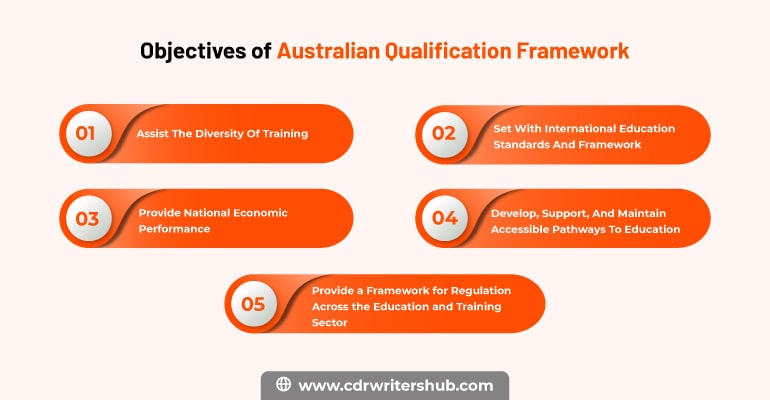Engineers application pathways for migration skill assessment

Engineers application pathways for migration skill assessment
In Australia, many potential migrants are welcomed since they can offer their talents and expertise to the country’s economic progress. Australia has a hospitable climate, expanding economy, and immigration processes in Australia have made it nearly ideal for people to live and work here. Engineering professionals are preferred more as per the need for skilled personnel. Engineers Australia has provided an opportunity for Engineers to move to Australia. However, they must meet certain criteria in order to apply. Before meeting the pathway criteria for Engineers Australia, there are some basic requirements that need to be fulfilled.
1. Occupational Categories
Table of Contents
Within the engineering profession in Australia, Engineers Australia recognizes three professional categories:
- Professional Engineer
- Engineering Technologist
- Engineering Associate
For the purposes of migration, the additional category of
- Engineering Manager
2. English language requirement
Engineers Australia requires all applicants applying to have their abilities tested to submit evidence of their English language fluency by one of the following tests:
- Engineers Australia accepts both the General and Academic versions of the IELTS test.
- The TOEFL iBT ® English language test is accepted by TOEFL.
- Engineers Australia accepts the Pearson PTE ACADEMIC test.
3. Pathways for Migration Skills Assessment
This is the part where you must decide which pathway to go with. There is a total of 6 application pathways for migration skills assessment. Each of the pathways has its own criteria. You can choose the one that best suits your field of occupation. You don’t need to apply for skill assessment if you have Australian Accord Qualification. However, if you are an overseas student, you need to submit CDR Report explaining your qualification and experience. Here we will discuss different pathways where you need to prepare CDR. These classifications come under two significant topics: accredited and non-accredited Qualifications.
Accredited qualification
1. Australian Qualification
2. Washington Accord Qualification
3. Sydney Accord Qualification
4. Dublin Accord Qualification
5. Other Recognized Qualification
Non-accredited qualification
6. Competency Demonstration Report (CDR)
Accredited qualifications
Accredited qualification is the Australian and overseas engineering qualifications acknowledged with formal international concord. The judgment of Australia and Accord Accredited qualification is rooted in undergraduate Qualification. The postgraduate qualification has been accredited as a detached qualification. However, if your Qualification is either undergraduate or postgraduate, you need to submit a Competency Demonstration Report(CDR).
Engineers Australia is a recorder to Washington, Dublin, and Sydney Accord. So, your Qualification needs to be recorded in a country to be accredited under the Accords.
1. Australian qualification
Graduates of Accredited Australian engineering programs are capable of migration skill Assessment with Australian Qualification Pathways. Engineers Australia accredits each program every year. Applicants need to start their studies when the Accreditation applies. It is represented by F and P. For short-term accredited Qualification denotes the provisional Accreditation, a CDR Report is required.
The Australian Qualification Frame(AQF), also called Australian Qualification Training Framework(AQTF), formerly. It sets the standards of education all over Australia. It includes all qualifications across every education sector into one policy framework. It aims to provide an elastic, nationally consistent, and high-quality framework that profits all students in the territory of Australia.
Objectives of AQF
- Assist the diversity of training both now and in the coming days
- Provide national economic performance through well-developed training courses
- Develop, Support, and maintain accessible pathways to education
- Provide a framework for regulation across the education and training sector
- Enhance the national and international mobility of Students, Graduates, and workers
- Set with international education standards and framework
2. Washington Accord qualifications
Accreditation concerns for the Qualification after the organization acquired signatory status to Washington Accord. The Qualification listed as accredited by the related certifier will be considered for recognition through the Washington Accord. The minor academic requirement for an assessment can be comparable to the four years of an Australian Bachelor’s degree in the engineering field.
Washington Accord Qualifications were signed in 1989. It is a multi-lateral agreement between bodies responsible for accreditation or recognition of tertiary-level engineering qualifications within their authority who have chosen to work collectively to assist the mobility of professional engineers.
The Accords are intended to focus on engineering practices, engineering professionals, and other activities. The Accord acknowledges that the Accreditation of engineering academic programs is a crucial foundation for engineering at the professional level in every country or territory covered by the Accord. It also outlines the mutual recognition between the participating bodies and other engineering programs. It sets the benchmark for engineering education across Australia.
3. Sydney Accord qualifications
The Qualification listed by the related signatory will be examined for recognition through the Sydney Accord. Accreditation applies for the Qualification after the organization gained the status of Sydney Accord. The minor academic requirement for an assessment is 3 years Australian Bachelor’s degree in the engineering field. The Sydney Accord will apply to the engineering degrees accredited by the respective representing body.
4. Dublin Accord qualifications
The Dublin Accord was signed in 2002 May by countries like Canada, the United Kingdom, the Republic of Ireland, and South Africa. It primarily focuses on recognizing academic and work qualifications that support the educational base of engineering students.
The Accord supports the educational base as a critical base for practice as an engineering technician in each of the countries or territories covered by the Accord.
The Qualification listed as accredited by the related signatory will be considered for recognition through the Dublin Accord. Accreditation applies for the Qualification after the organization achieved signatory status to the Dublin Accord. The Dublin Accord will register signatory status to the Dublin Accord. The Dublin Accord will apply to the engineering degrees approved by the representative body of the signatory country.
5. Other recognized qualifications
Engineers Australia signed an alliance with the French Commission to recognize a french engineering degree in Australia. You need to apply online if you choose this pathway for the Accordion. Washington Accord is the best Accord to apply online.
Non-accredited qualifications
If you have non-accredited qualifications, then you have to submit CDR Report. Competency Demonstration Report(CDR) is a document that explains your skills and knowledge as an engineer and meets Australian Standards. EA evaluates your CDR before determining whether you fit into the occupational category you are applying for or not. It is the way for immigration to Australia. Poorly written content has a poor likelihood of succeeding in Australia. Engineers Australia has selected four occupational categories of engineers for migration: Professional Engineer, Engineering Technologist, Engineering Associate, and Engineering Manager.
Engineers are in great demand in Australia, which is why many engineers migrate there. Before applying for a Skilled Migration Visa, all engineers must undergo a skilled assessment, which Engineers Australia provides. Engineers get a positive competence evaluation from Engineers Australia, which implies that the engineer’s qualification is recognized and the engineer is eligible to operate in Australia. The engineer can apply for a skilled assessment visa after receiving a favourable skill assessment. The competency demonstration report (CDR) pathway is an important document that gives information about the engineer’s proficiency level.
The Competency Demonstration Report (CDR) is a technical document that permits engineers to move to Australia and get a Skilled Migration Visa. The EA is the evaluation authority that determines whether or not the engineers meet the Australian Standards. CDR should be written properly because it is the document for your skill assessment that is examined by EA. The EA will only accept the CDR report if they are pleased; otherwise, the report will be denied. The CDR documentation contains information on the engineer’s personal background, education, and projects completed in high school or college.
Since a CDR is the spine of your Australian Skilled Migration application, do not be contented with your CDR Report Writing as CDR comes under non-accredited qualifications. Candidates need to apply for the specified nominated ANZSCO Code by Engineers Australia. CDR should reflect applicant roles and responsibilities in the nominated occupation list.
Things you need to know about non-accredited courses
- A non-accredited course has no link to an external accreditation or authority
- Non-accredited concentrated on providing the student with specific knowledge and skillset
- You can study a non-accredited course to help your current and future career
- It doesn’t carry any professional recognition, and you can still add it to your CV
- It is usually of shorter period
- Non-accredited courses are pretty cheaper than professional courses
- No-accredited courses are more affordable than professional courses
Tips for writing perfect CDR report
Here are the tips you need to write a perfect CDR Report. They are:
- First, don’t miss reading the MSA booklet before writing CDR Report. You need to have 3 major components in your CDR Report: 3 Career Episodes, Summary statements, and Continuous Professional Development(CPD).
- Selecting the project wisely for Career Episodes is very important. Moreover, look at EA guidelines and criteria and select projects to write in the comprehensive episodes.
- Each Career Episodes should not relate to each other. It helps you to write each episode separately and show your capabilities in multiple projects.
- CDR Report needs to be written in Australian English. So, avoid spelling, grammar, and writing style. However, if you make Career Episodes in another language, don’t forget to translate them into Australian English.
- You need to write Career Episodes in the first person and in active voice. EA wants you to talk about your work instead of teamwork. Don’t elaborate on what your work did.
- Your content should be unique, plagiarism-free as EA is very strict with plagiarism. So don’t copy directly from the Internet, instead, take them as a reference and write your self.
- The first thing that assessors read is the Summary Statement. So, this should be written correctly, without plagiarism.
Documents you need to include in CDR report
Writing a perfect CDR Report requires a lot of time and effort. You need to include the following documents for migration skills assessment.
- CDR Application Form
- Quality Copies of Academic Records
- Proficiency Language Test Result
- Recent resume
- Declaration of CDR Report
- Summary Statements
- 3 Career Episodes
- Continuous Professional Development(CPD) List
Why do you need to choose us?
CDRWritersHub provides services for applicants that come under non-accredited qualifications. Our professional expert team helps you to write the best service for CDR Report Writing. Career Episodes, Summary Statement, CPD Writing, Resume Writing, and more are a vital part of a CDR Report.




